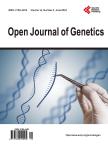Diagnostic challenges in Salla disease
Diagnostic challenges in Salla disease作者机构:Department of Biochemistry and Medical Genetics University of Manitoba Winnipeg Canada Program of Genetics and Metabolism Winnipeg Canada Department of Biochemistry and Medical Genetics University of Manitoba Winnipeg Canada Program of Genetics and Metabolism Winnipeg Canada Department of Pediatrics and Child Health University of Manitoba Winnipeg Canada Department of Pediatrics and Child Health University of Manitoba Winnipeg Canada Diagnostic Services Manitoba University of Manitoba Winnipeg Canada Department of Pediatrics and Child Health University of Manitoba Winnipeg Canada Section of Pediatric Neurology University of Manitoba Winnipeg Canada Department of Radiology Section of Pediatric Radiology University of Manitoba Winnipeg Canada Lysosomal Diseases Testing Laboratory Thomas Jefferson University Philadelphia USA
出 版 物:《Open Journal of Genetics》 (遗传学期刊(英文))
年 卷 期:2013年第3卷第2期
页 面:46-49页
学科分类:1002[医学-临床医学] 100214[医学-肿瘤学] 10[医学]
主 题:Sialic Acid Salla Disease Lysosomal SLC17A5
摘 要:Sialic acid storage disease (Salla disease) is an autosomal recessive disorder caused by mutations in a lysosomal sialic acid export protein, SLC17A5 (OMIM #604369). This disorder was initially described in Northern Finland but more recently has been reported in patients of other ethnicities. We describe the clinical presentation and the neuroimaging findings of two non-Finnish children where a diagnosis of Salla disease was suspected on the basis of brain magnetic resonance imaging. The biochemical confirmation of this diagnosis posed a challenge as both patients had elevated percent free urine sialic acid but biochemical analyses in fibroblasts were not conclusive;therefore, molecular testing was necessary for confirmation of the diagnosis. The described encounters demonstrate the importance of pursuing confirmatory molecular diagnostic testing when a sialic acid storage disorder is suspected.



